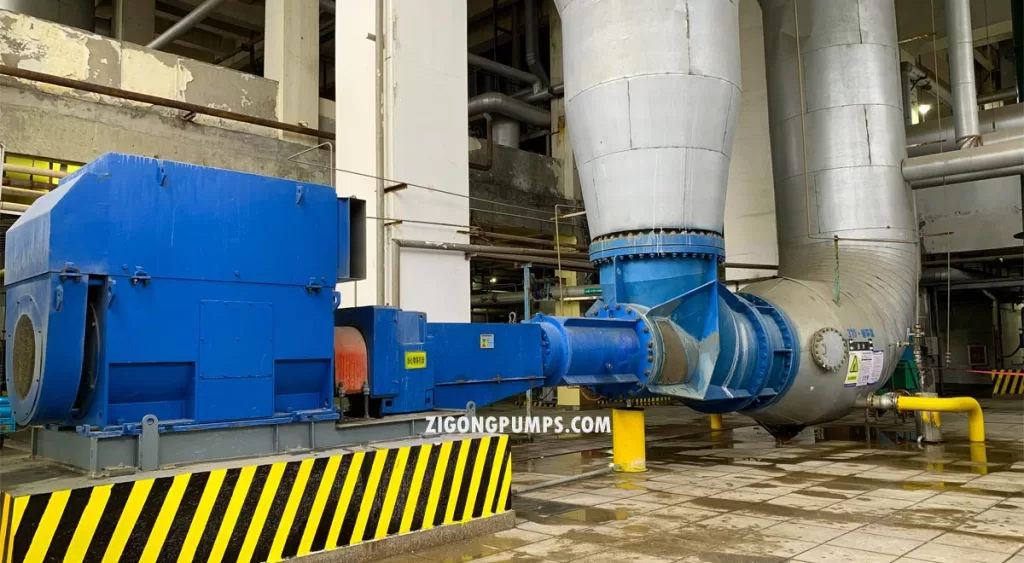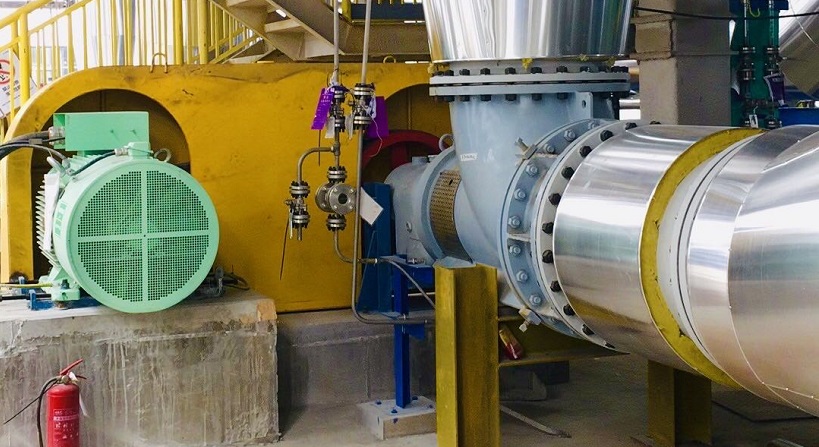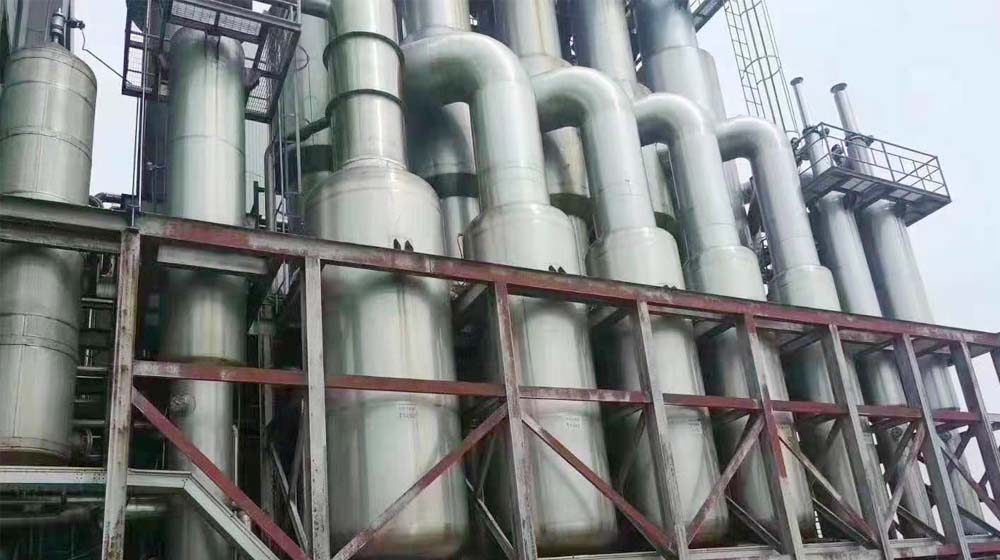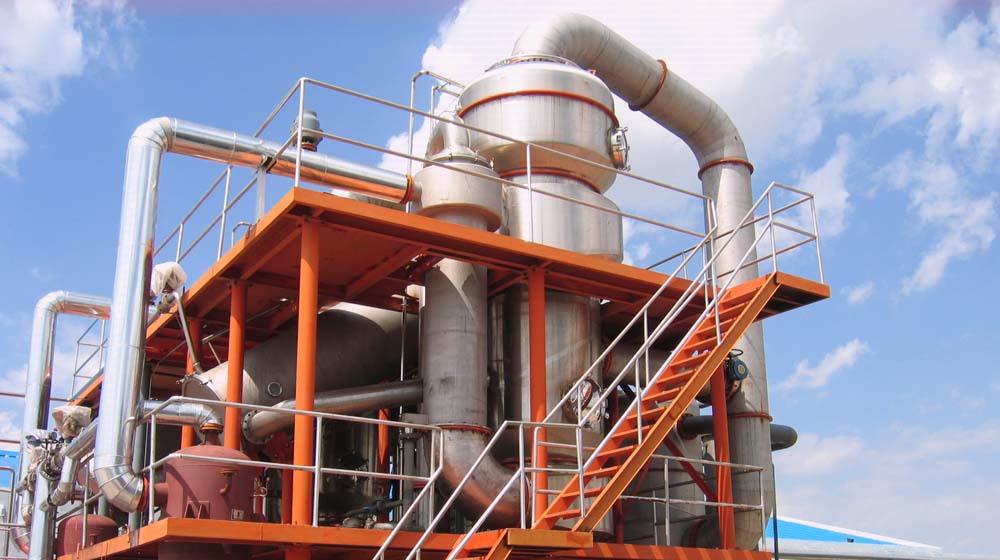Working Principle of Falling Film Evaporator
The falling film evaporator is a widely used evaporator in industrial production. Its primary principle involves the formation of a film-like flow of the liquid inside the evaporator inner small tubes, thereby achieving efficient evaporation and concentration. Here are the four main aspects encompassing the working principle of the falling film evaporator:
1. Liquid Distribution
In the falling film evaporator, the liquid is pumped to the top of the evaporator and evenly distributed over the tube bundle after passing through the distributor. The design of the distributor ensures uniform coverage of the tube bundle, laying a solid foundation for subsequent film formation.
2. Film-like Flow of Liquid Outside the Evaporator Tubes
In the falling film evaporator, the liquid flows down from the top of the tube bundle and forms a layer of film outside the tubes. Due to gravity and friction with the tube walls, the liquid flows evenly inside the tubes, creating a continuous liquid film. This film-like flow increases the heat transfer area, enhancing heat transfer efficiency.
3. Transition of the Liquid Film to Vapor at Boiling Point Temperature
Heat energy is transferred to the water inside the tubes through the heat exchanger, raising the temperature of the outer tube wall. When the heat energy reaches the boiling point temperature, the liquid film begins to transition into vapor. During this process, water from the liquid evaporates while solutes and some solvents are concentrated. As the evaporation process progresses, it eventually forms highly concentrated concentrate.
4. Discharge of Vapor and Concentrated Liquid
Vapor is discharged from the top of the evaporator and can be collected or released after condensation in the condenser. The concentrated liquid is collected through a liquid collecting trough and can be further processed or discharged. The design of the falling film evaporator allows for effective discharge of vapor and concentrated liquid, ensuring continuous and stable operation.
2.Maintenance and Care
As a vital industrial equipment, maintenance and care of falling film evaporators are crucial for ensuring stable operation and prolonging lifespan. Here are eight key aspects encompassing the maintenance and care of falling film evaporators:
1. Regular Inspections
Regularly inspecting the falling film evaporator is a pivotal aspect of maintenance. This includes examining the equipment’s exterior, pipelines, and seals to ensure there are no leaks, damages, or abnormalities. Additionally, check operational parameters such as temperature, pressure, and flow to ensure the equipment operates within normal ranges.
2. Cleaning and Maintenance
Cleaning and maintaining the falling film evaporator are crucial for preserving its performance. It’s essential to periodically clean the interior and exterior of the evaporator to remove scaling and impurities, preventing blockages and corrosion. Furthermore, lubricate and maintain components like valves and bearings to ensure smooth operation.
3. Replacement of Worn Components
With usage, certain components of the falling film evaporator may experience wear or aging, such as bearings and seals. Upon detecting wear or damage in these parts, prompt replacement is necessary to avoid equipment failure and production disruption.
4. Monitoring Operational Status
Real-time monitoring of the falling film evaporator’s operational status is a key maintenance measure. By installing sensors and monitoring systems, parameters like temperature, pressure, and flow can be monitored continuously to promptly identify anomalies and take appropriate action.
5. Maintaining Cleanliness
Maintaining cleanliness and hygiene in the falling film evaporator is a fundamental maintenance requirement. Regularly clean the equipment’s surface and interior while ensuring foreign objects and debris are kept out to ensure smooth operation.
6. Checking Seal Integrity
Seal integrity is one of the crucial performance indicators of a falling film evaporator. Regularly inspect the equipment’s seals, and if any leaks are detected, address them promptly to prevent performance degradation and production accidents.
7. Adjusting Operational Parameters
Adjusting operational parameters significantly impacts the performance and stability of a falling film evaporator. During routine maintenance, pay attention to parameters like temperature, pressure, and flow, adjusting them according to actual conditions to maintain optimal performance.
8. Maintenance Records
Establishing and maintaining maintenance records is a vital aspect of falling film evaporator maintenance. Detailed records of equipment inspections, cleaning, maintenance, component replacements, as well as operational status and parameters, should be kept. This facilitates timely detection and handling of equipment faults and provides a reference basis for preventive maintenance. Moreover, maintenance records can be used for equipment fault diagnosis, performance evaluation, contributing to improved operational efficiency and extended lifespan.
3.Common Issues
1. Liquid Flooding: Excessive liquid levels in the falling film evaporator can lead to liquid entering the apparatus, blocking pipelines, reducing heat transfer efficiency, and potentially causing equipment shutdown.
2. Scaling: Prolonged use of the evaporator can result in mineral and impurity deposition on the tube walls and heating surfaces, forming scale deposits that impair heat transfer efficiency and equipment operation.
3. Clogging: Impurities or insoluble substances in the feed may cause blockages within the evaporator or pipelines, resulting in reduced flow rates or complete flow stoppage.
4. Foaming: Surfactants or volatile substances in the feed may generate excessive foam within the evaporator, hindering liquid flow and heat transfer effectiveness.
5. Corrosion: Corrosive substances or oxygen in the solution may corrode the metal components inside the evaporator, diminishing equipment performance and lifespan.
6. Low Thermal Efficiency: Inadequate heating surface area, insufficient temperature differentials, or excessive heat losses may lead to low thermal efficiency, increasing energy consumption and production costs.
7. Large Temperature Differences: Excessive temperature differentials between the heating and condensing sides of the evaporator may occur due to insufficient heat loads, oversized heating surfaces, or poor condensation effects. Large temperature differences not only affect equipment performance but may also lead to equipment damage.
8. Pressure Fluctuations: Pressure fluctuations within the evaporator may affect equipment stability and product quality. These fluctuations may arise from changes in feed rates, fluctuations in heating steam pressure, or fluid dynamics within the equipment.
9. Excessive Vibration: Significant vibrations during evaporator operation may result from unstable equipment installation, variations in pipeline stress, or imbalances in fluid dynamics. Vibrations not only impact equipment lifespan but also pose a threat to production safety.
10. Unstable Flow Rates: Fluctuations in feed or discharge flow rates may affect equipment production efficiency and product quality. Unstable flow rates may stem from feed pump malfunctions, pipeline blockages, or inaccurate flow meters.




